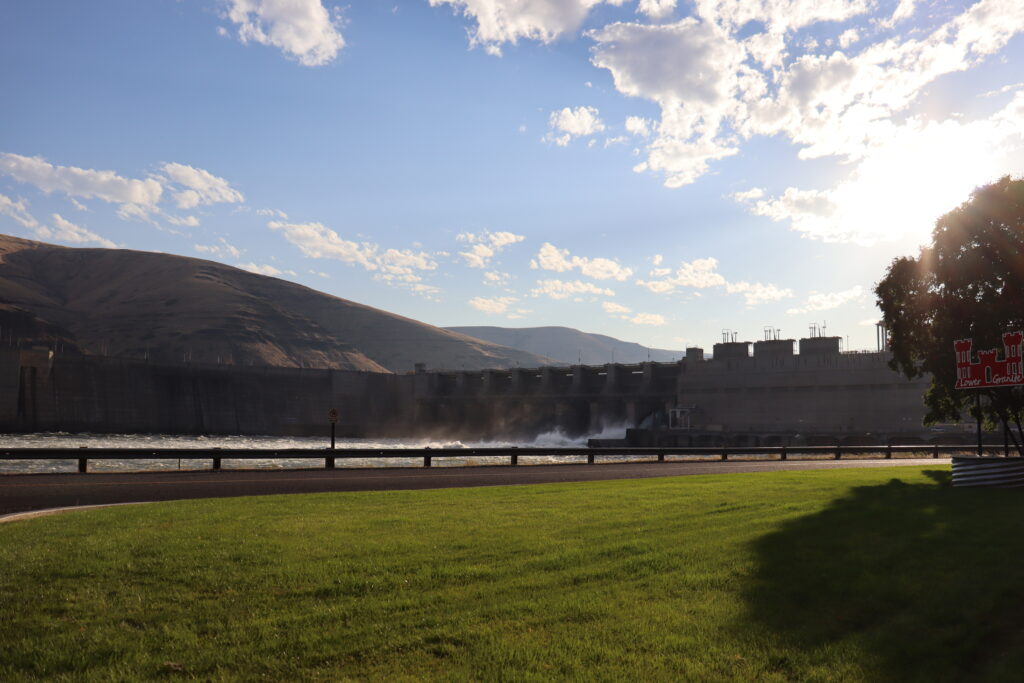Salmon play a hugely important role in Idaho’s ecosystem. There are several different species that inhabit the rivers of Idaho, but one in particular stands out. The Chinook salmon is an anadromous species, meaning it migrates from freshwater to the ocean, returning to its breeding grounds at the end of its life. The salmon spawn at the headwaters or in the mainstems of river systems. After a year of rearing they travel to the ocean for 2-3 years, eventually returning to breed. Not all salmon make it to a year before they begin their migration- these salmon are known as sub-yearlings.

The declining trend of Chinook salmon is described in detail by the Environmental Protection Agency.
“Salish Sea Chinook salmon populations are down 60% since the Pacific Salmon Commission began tracking salmon abundance in 1984. Between 2000 and 2018, the total number of Chinook returning to the Salish Sea has shown a relative economy of the region because of the commercial and recreational fisheries,” According to the EPA. “They [salmon] play a critical role in supporting and maintaining ecological health, and in the social fabric of First Nations and tribal culture.”

Currently, there are eight dams along the Lower Snake River and the Columbia River that create obstacles for the anadromous species in the area. According to lead supervisory project biologist Elizabeth Holdren, Lower Granite Lock and Dam does the most research, because it is the first dam that juvenile fish pass and the last dam that adult fish returning to spawning grounds pass.
The Lower Granite Lock and Dam has several ways for juvenile fish to get past the dam. There is also one fish ladder at the dam that allows for returning adult salmon to return for spawning. The fish ladder has six different entrances that attract the fish into them with water pressure formed by varying depths of the openings.
The Lower Granite Lock and Dam has four passage routes for juvenile fish to get past the dam. The first passage is a traditional spill where fish go through the dam’s spillways. These spillways open from the bottom up in order for the fish to find the exit route, 53-57 feet below the surface.“We do get a lot of fish passage through those routes and the survival is very high- it’s over 98 percent,” Holdren stated.


There are seven spillway weirs total with the first one being removable. It sits inside the traditional spillway, allowing all of the water to go over the top. Salmonids prefer the top 10-20 feet of a water column, so collecting them at the top gives them a nice passage route that doesn’t expose them to different water pressures. This route is known as the surface bypass.
The third passage is the bypass system itself, which deters fish from the turbine. As fish are approaching turbine unit intake, they are coming down from the forebay, going to the tailrace, and then approaching a screen that is designed with a bar mesh. This mesh has perforated holes on the back that provide nice gradual flow for fish to surface into a gate well. They then go through a hole, and once arrived, they are reverted all the way around the dam and down to the juvenile facility.
The final passage is through the turbine unit. Very few fish actually miss the screen, successfully going through the turbine unit.

“Survival through the turbine is about 90%, and you can fit a Volkswagen bug through the blades,” Holdren states. “At Ice Harbor Dam, there is a fish-friendly turbine which reduces the change in pressure so fish survival rate through that turbine is 98.3 percent.”
Fish that go through the bypass system are collected and transported by trucks and barges. There are eight barges; the two oldest and smallest ones were used to deliver water to the U.S. military during WWII. The larger barges each hold 12,500 pounds of fish. The fish are transported to just below the Bonneville Dam and pick up fish from all of the other dams as well. There is a high amount of predation pressure that key in on salmon when they are transported. Pelicans and sea lions are two of the predators that come and eat large amounts of fish being released, in addition to fish in estuaries and out in the ocean.
There is also one fish ladder at the dam that allows for returning adult salmon to return for spawning. The fish ladder has six different entrances that attract the fish into them with water pressure formed by varying depths of the openings.
“About 90-98% of juvenile fish survive the different passageways across the dam,” Holdren said.
Christopher Caudill is an associate professor of fish biology and aquatic ecology at the University of Idaho. Caudill believes that juvenile fish can pass these dams because of how greatly the engineering has improved over the past 20-30 years. Caudill claims that even with new technology, the dams still pose threats on the salmon.
“It takes the salmon longer to get through the ocean because they have to swim through reservoirs rather than moving through free-flowing rivers,” Caudill stated.

Other human impacts on salmon include logging. Large logs are driven down the river and simplify the stream channel, reducing the habitat. Caudill also describes how beavers influence salmon and watersheds, as well as provide habitat. The beavers were largely trapped out in the past but are starting to recover.
Even with advanced technology, Chinook salmon’s journey to the ocean and back still has been affected by the eight dams on the lower Snake River and Columbia River. As innovation and management improves in the future, we are sure to see Idaho’s aquatic infrastructure continue to influence these fragile ecosystems.
For more information on Idaho dams and Chinook salmon conservation, visit the Lower Granite Lock and Dam website.